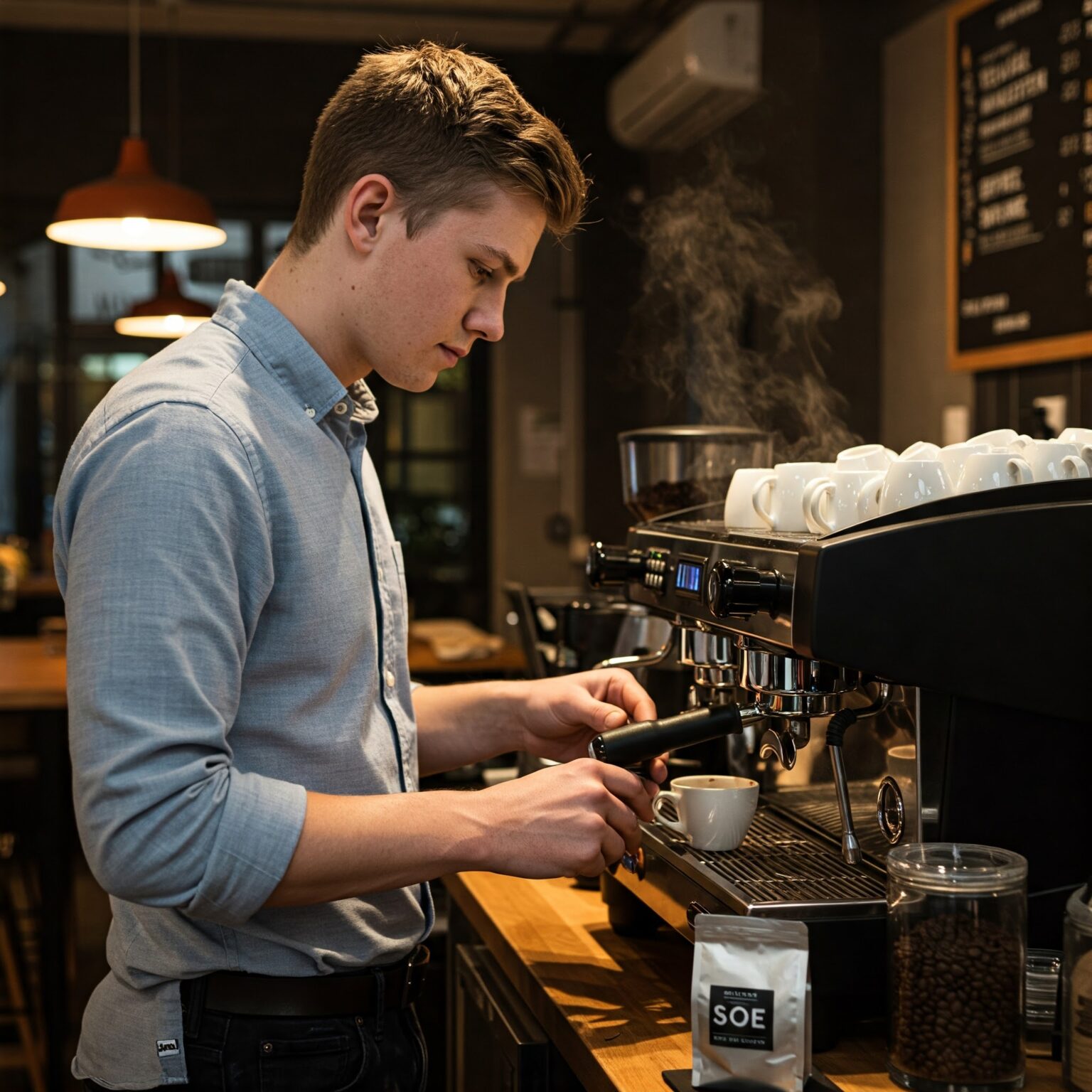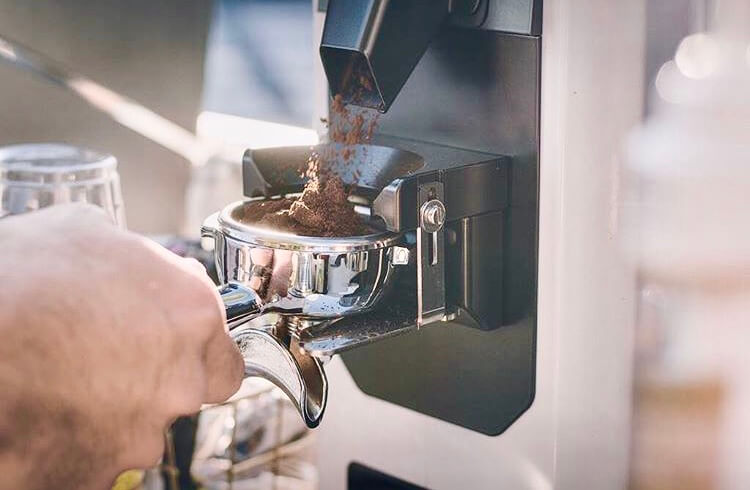How to Store SOE Single Origin Espresso for Maximum Freshness
Coffee Beans 101: Whatever You Need to Know About Coffee and Blended Coffee Beans
When it pertains to coffee, understanding the nuances of coffee and blended beans can change your day-to-day cup. You'll uncover the distinct characteristics of Arabica and Robusta beans, and how each influences flavor and caffeine web content. From the growing process to toasting techniques, every step contributes in your coffee experience. What makes the perfect brew? Let's discover the important aspects that add to a phenomenal mug of coffee.
Understanding Coffee Beans: Types and Selections
When diving into the globe of coffee, understanding the types and varieties of coffee beans is important for every single enthusiast. You'll mainly come across two main species: Arabica and Robusta. Arabica beans are understood for their smooth, complicated tastes and reduced caffeine web content, making them a favored among coffee connoisseurs. On the other hand, Robusta beans pack a punch with a more powerful, extra bitter preference and higher high levels of caffeine levels, commonly made use of in espresso blends.
Ethiopian Yirgacheffe supplies intense floral notes, while Colombian beans give a well-balanced flavor account. By familiarizing yourself with these beans and their tastes, you'll elevate your coffee experience and make even more enlightened selections in your brewing trip.
The Growing Refine: From Seed to Bean
When you explore the trip of coffee, everything beginnings with seed selection techniques that set the structure for quality. From there, cultivation and collecting play necessary functions in making certain the beans flourish. Finally, handling methods transform those collected cherries into the coffee beans you enjoy.
Seed Selection Methods
Choosing the ideal seeds is crucial for generating premium coffee beans, as it lays the foundation for the entire expanding procedure. You need to start by selecting seeds from trusted resources that focus on quality and genetic diversity. Look for ranges understood to grow in your particular environment and soil problems. Pay interest to the seed's age and storage space problems, as fresh seeds tend to germinate far better. When feasible, go with natural seeds to minimize exposure to harmful chemicals. Think about the condition resistance of different varieties, as this can substantially impact your yield. Finally, don't think twice to speak with regional farmers or specialists to gain insights into the most effective seed choices for your region. This expertise will improve your coffee-growing experience.
Farming and Harvesting
As you support your coffee seeds right into prospering plants, comprehending the cultivation and harvesting procedure is crucial for accomplishing the best taste and high quality. Start by planting your seeds in well-draining soil, ideally in a shaded location to protect them from direct sunlight. As your plants expand, preserve consistent dampness, and be mindful of their requirement for nutrients. Prune regularly to advertise air flow and healthy development.
Hand-picking is often the ideal method to guarantee just the ripest cherries are chosen. Timing is necessary; harvesting too very early or too late can impact the taste profile of your beans.

Handling Methods Described
Once you've gathered your coffee cherries, the next crucial action is processing them to transform those dynamic fruits into the beans you'll make. In the completely dry procedure, you spread the cherries out in the sun to completely dry, allowing the fruit to ferment and present one-of-a-kind tastes to the beans. Comprehending these techniques is essential to enjoying your coffee experience.
Toasting Methods: Exactly How Flavor Is Developed
When it comes to toasting coffee beans, comprehending roast degrees is vital to exposing their distinct flavors. Each toasting strategy impacts the aroma and boosts the flavor development procedure, giving you a richer coffee experience. Let's discover exactly how these factors collaborated to raise your daily mixture.
Roast Degrees Described
Roast levels play an essential function in forming the taste profile of your coffee. By comprehending these degrees, you can much better select a coffee that matches your taste choices. Experiment with different roasts to find which one resonates with you, improving your total coffee experience and satisfaction.
Influence on Aroma
The roast level not only influences the preference of your coffee yet also substantially impacts its fragrance. When you choose a light roast, you'll commonly see bright, flower notes that can make your coffee scent vibrant and fresh. As the beans darken, the scent changes; a medium roast highlights more balanced, caramelized scents, while a dark roast has a tendency to include vibrant, great smoky touches. Each toasting method releases various unstable substances, shaping just how your coffee scents. Additionally, the quality of the beans plays an important role; newly roasted coffee releases more aromatic oils, enhancing that enticing scent. So, take note of the roast level-- it's essential to revealing the complete aromatic experience of your mixture.
Flavor Development Refine
As you check out the taste advancement procedure, you'll discover that toasting strategies play a critical role in shaping the taste profile of your coffee. The roasting temperature level and time straight affect the level of acidity, sweetness, and resentment of the beans. Light roasts preserve more of the bean's original tastes, highlighting flower and fruity notes.
Espresso vs. Blended Coffee: Secret Distinctions
Espresso and blended coffee each offer distinct experiences that satisfy different preferences and choices. Coffee is a concentrated coffee brewed forcibly warm water with finely-ground coffee beans, causing an abundant, vibrant flavor and a luscious layer of crema ahead. It's typically enjoyed as a shot or utilized as a base for beverages like cappucinos and site here coffees.
On the other hand, mixed coffee combines various beans from various areas, developing an extra well balanced taste account. You'll usually find blends that highlight sweetness, body, or acidity, making them functional for various developing techniques. While coffee concentrates on strength, mixed coffee might supply a more comprehensive array of tastes that can transform with each sip.
Inevitably, your selection in between coffee and mixed coffee come down to your individual preference. Whether you crave a quick shock or a leisurely mug, both alternatives have something tasty to use.

Brewing Techniques: Opening the Perfect Mug
When it pertains to developing coffee, discovering the right method can transform your experience and boost your mug. Each brewing method has its unique charm and can greatly impact your coffee's taste and scent. As an example, making use of a French press permits you to delight in a full-bodied and rich brew, while a pour-over approach offers a clean, brilliant mug with unique tastes.
If you choose coffee, buying a quality device can assist you grasp the art of drawing shots. For comfort, a single-serve hull system supplies rate without sacrificing taste.
Do not fail to remember regarding chilly mixture, which provides a smooth, less acidic coffee suitable for warm days. Experiment with different approaches to uncover what reverberates with your taste.
Sampling Notes: Determining Flavor Profiles
Exactly how can you absolutely value your coffee if you don't understand what flavors to look for? Sampling notes are your overview to comprehending the complex globe of coffee. Some coffees might leave a chocolatey or sugar aftertaste, while others may have a brilliant, tidy surface.
Think about the body of the coffee, too; is it ventilated and light or thick and syrupy? Don't neglect acidity; an intense level of acidity can add vigor, while a low acidity may offer a smoother experience. By determining these taste profiles, you'll grow your connection with each mug, making coffee sampling a wonderful trip of discovery.

Tips for Picking and Storage Coffee Beans
Picking and keeping coffee beans correctly can greatly improve your developing experience. Begin by choosing top quality beans that suit your taste. Seek quality; beans baked within the last two weeks are suitable. Examine the roast date on the packaging, and get from regional shops or credible roasters.
Once you have your beans, store them in an airtight container to stop exposure to air, light, and moisture. A dark, awesome location functions best, so stay clear of keeping them in the refrigerator or fridge freezer, as this can introduce wetness. Only grind the amount you need to keep quality; entire beans preserve taste longer than pre-ground coffee.
Last but not least, attempt to use your beans within two to four weeks after opening for peak taste. Following these tips will certainly ensure your coffee remains delightful and flavorful, boosting your day-to-day brew to new heights.
Regularly Asked Inquiries
Exactly How Long Do Coffee Beans Stay Fresh After Toasting?
Coffee beans remain fresh for about two weeks after toasting - SOE. You must store them in an airtight container, away from light and moisture. Afterwards, their flavor and fragrance start to lessen significantly

Can I Mix Different Coffee Bean Varieties?
Absolutely, you can mix various coffee bean ranges! Try out blends can boost tastes and create an unique taste account. Simply make certain to balance the staminas and characteristics of each selection for the very best outcomes.
What Is the Suitable Work Size for Coffee?
For espresso, you'll why not check here desire a fine work size, concerning the structure of table salt. This permits perfect removal, leading to an abundant, tasty shot. Experiment a bit to find what matches your taste best!
Exactly How Does Altitude Affect Coffee Bean Taste?
Altitude influences coffee bean taste by affecting the growth price and chemical composition. Higher altitudes cause slower growth, which enhances acidity and intricacy, providing your coffee a one-of-a-kind and dynamic preference you won't neglect.
Are There Decaffeinated Versions of Coffee Beans?
Yes, there are decaffeinated versions of espresso beans. You can take pleasure in an abundant espresso taste without the high levels useful content of caffeine kick. Just seek "decaf" blends at your regional coffeehouse or specialized shop.
Coffee Beans 101: Everything You Required to Know About Espresso and Blended Coffee Beans.
When diving into the world of coffee, recognizing the types and varieties of coffee beans is vital for every fanatic.When it comes to toasting coffee beans, understanding roast levels is key to revealing their one-of-a-kind flavors. Coffee is a focused coffee made by forcing hot water via finely-ground coffee beans, resulting in a rich, strong taste and a luscious layer of crema on top.On the various other hand, combined coffee incorporates numerous beans from various areas, developing an extra balanced taste account.